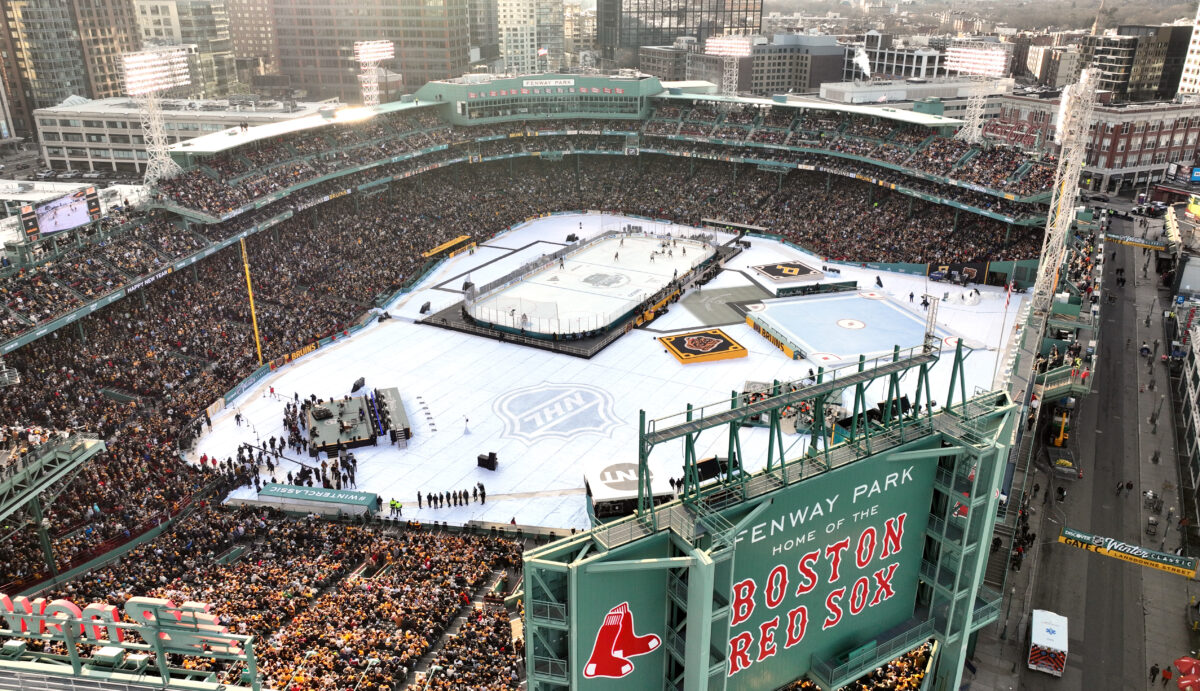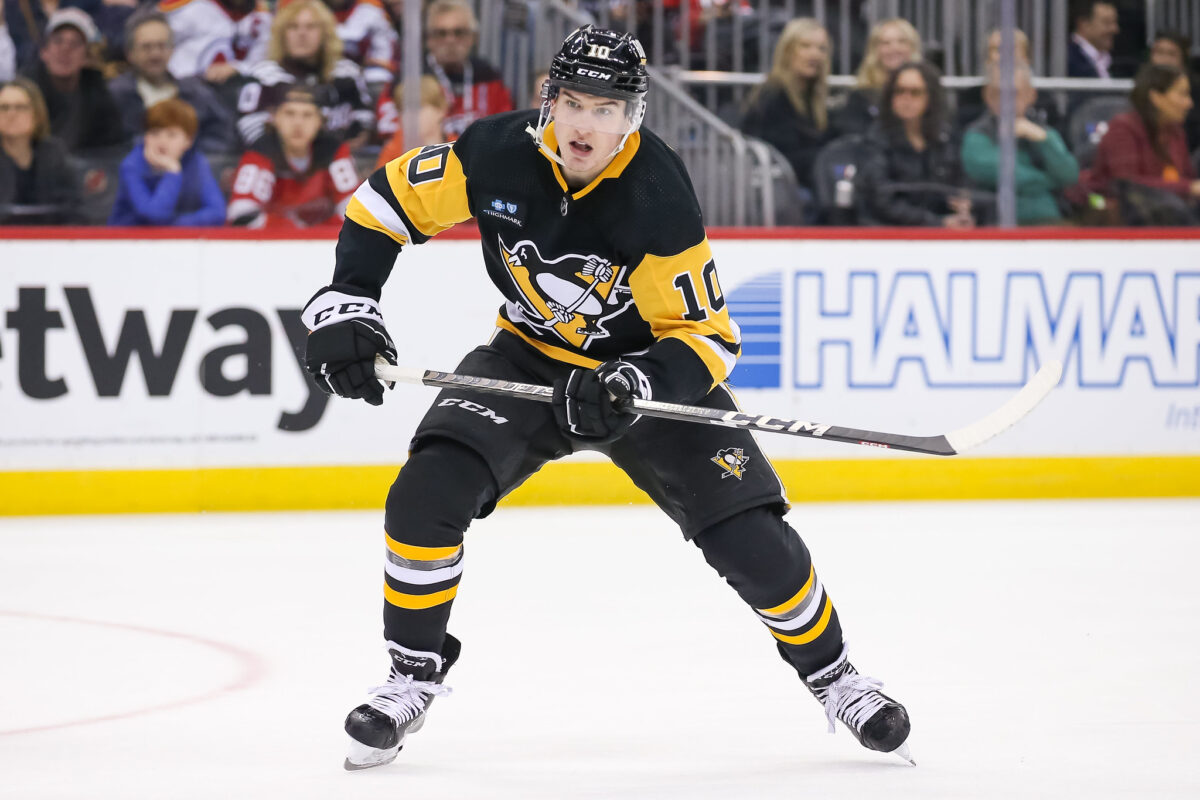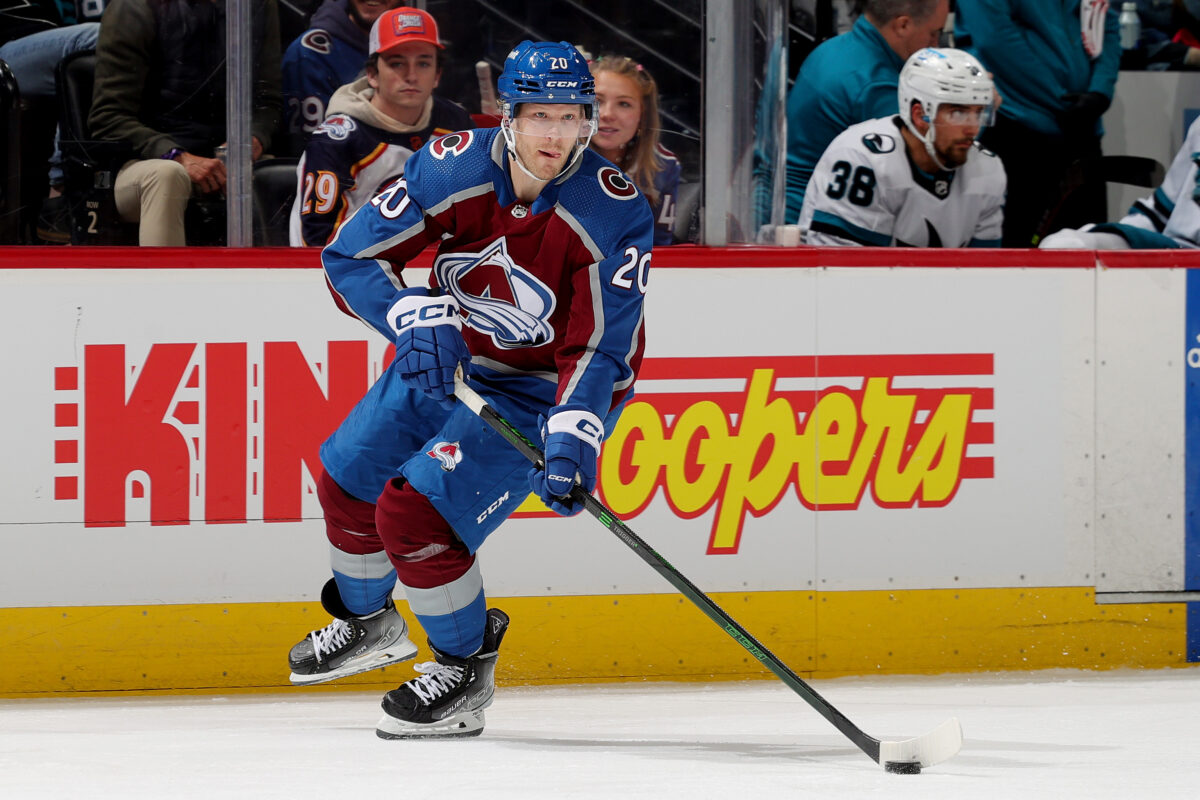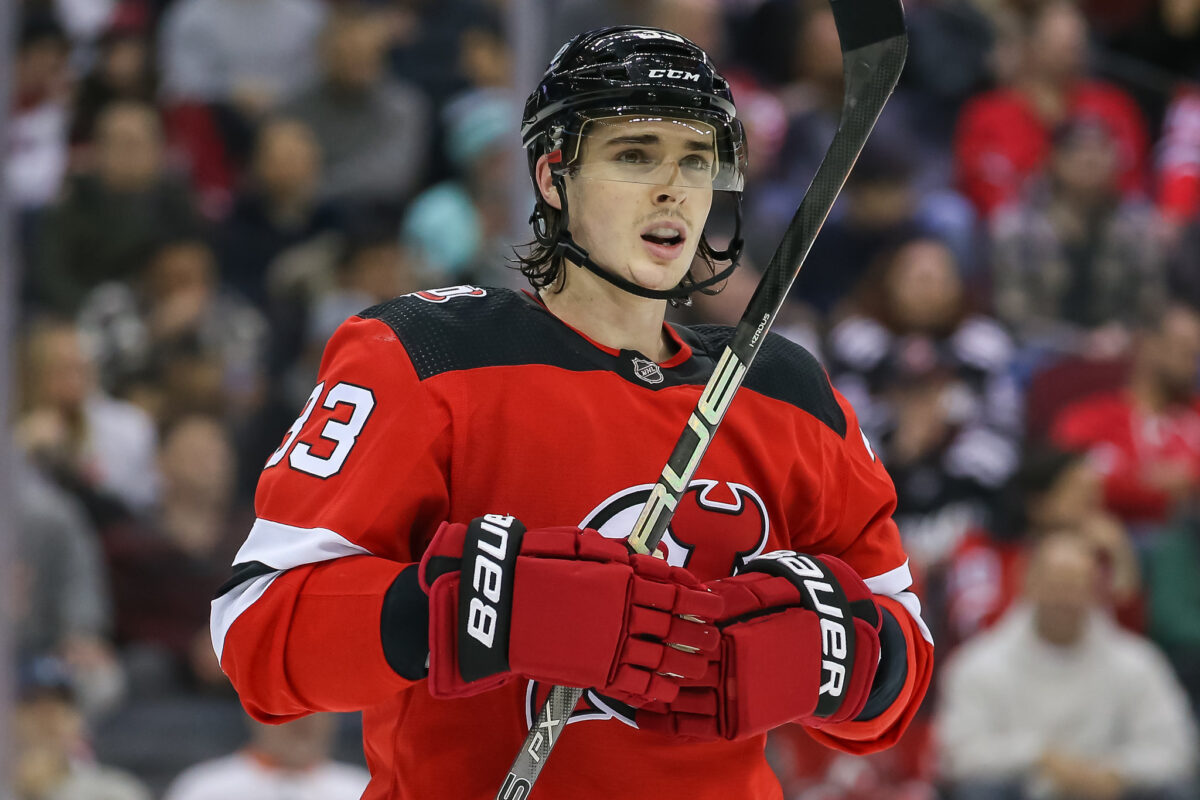Several years ago, I was the head scout of a junior hockey team in Ontario. I was in my 20s, and between playing the game at a fairly high youth level and seemingly constantly studying it (thank you paper versions of The Hockey News and its Yearbook), I knew what a depth chart was.
The junior team I was working for started the regular season with six wins in seven games, a 6-1 record. We were in first place. It was magical, and we were dominant.
- Our top scoring line was good for two or three goals each game.
- Our third line was our league’s version of Detroit’s famed late 90s line, The Grind Line. They skated fast, forechecked relentlessly, hit everything that moved, and were both intelligent and engaged defensively. So tough to play against.
- Our goaltender was one of the best in the league. He was large, filled the net, tracked the puck well, cut off angles, and moved well in the crease. He was tough to put a puck past.
Our defense was led by one of the few true number-one defensemen in this league. He played 30 minutes a night against the opposing teams’ top lines, and as you can see by our record, he did a pretty good job of shutting them down. Simultaneously, he drove the offense. He quarterbacked our top power-play unit. I can still remember him receiving a pass for a one-timer where, from the boards on his off-hand and legitimately 57 feet from the goal (right in front of the blue line), he one-timed a slapshot cross-ice, through everyone, past the opposing goalie. I’d never seen a goal like it before or since.
Then, he broke his wrist.
You likely know what the echo here is. It’s the same in a hockey ops room as it is in the media and from fans: “Next person up.” At this point, the player directly behind this defenseman on the depth chart was playing well against second lines and borderline dominating third lines. We were confident that he would be fine and the team would be. Hell, we thought our seventh defenseman who was now stepping into the lineup would be fine and get good experience in sheltered minutes. It was only our third-pairing defenseman, moving up into the top four, who we were concerned about. Yet, it was what it was, and overall, we may not quite win six out of every seven games, but we’ll still play .600 hockey and win more than we lose. We thought we’d be fine.
Were we ever wrong.

While our top scoring line kept scoring, they were exposed as one-dimensional players who were allergic to coming back into their own zone and really engaging.
Our third line was broken up with the thought being to spread that depth across multiple lines and have players who can have a true impact on the game on every line, on every shift. It was galaxy brain-thinking. In breaking up that line, we found that the whole was greater than the sum of its parts. Together, they formed Devastator. Apart, you had a fast, cerebral center who had limited impact outside of the defensive zone, a constantly blitzing winger who was uncontrolled and inconsistent, and a glue guy who made no impact whatsoever on other lines.
Every defenseman who moved up the chart to play a larger role got caved in, plain and simple. We saw where their limitations were, that the second pair defenseman couldn’t play against top lines, that the third pair defenseman couldn’t play against second lines, and that our seventh defenseman couldn’t play, well, at that level, period.
Latest THW Headlines
Our goaltender – I mean, the wheels fell off. Pucks that he had a clear view of got past him. He didn’t track the puck as well to get into position. When the puck was in tight, he didn’t move around in the crease as well as we thought. Without our top defenseman, more pucks got to the net, and more pucks went in.
We lost, and we lost, and we lost. Game after game. If memory serves, we lost six straight before winning again. It took two months for the player to return from the broken wrist, and while he was still a very good player, he wasn’t the same. So, we reacted, we counter-punched. We traded for a goalie who could stand on his head. We got a power forward to play the wing on our second line. I even convinced the coaching staff to put our grind line back together.
They were good, but not the same.
Across the team, the magic was gone.
At that point, for the first time in my life, I truly, actually understood what a depth chart was and what it meant to ask a player to play a role beyond his capabilities.
Today, we’re going to take a deep dive into Pittsburgh’s current depth chart and see if we can pinpoint why the team is off to a troubling start.
Penguins’ Forward Depth Chart
| Jake Guentzel | Sidney Crosby | Bryan Rust |
| Reilly Smith | Evgeni Malkin | Rickard Rakell |
| Drew O’Connor | Lars Eller | Radim Zohorna (!) |
| Matt Nieto | Noel Acciari | Jeff Carter |
| Alex Nylander | Sam Poulin | Jansen Harkins |
As you may have inferred, the bolded players are going to be the focus.
Drew O’Connor: He’s improving, as you saw Thursday night (Oct. 26) when he was a relentless force against the Colorado Avalanche. Regardless of his repeated training camp stardom, it’s a lot to ask of someone who wasn’t a regular fourth-line player last season to step up and be a key contributor to what amounts to a line you expect to be able to shut down the opposing team’s top lines and score 45 goals a season.

After an absolutely invisible start, the addition of Radim Zohorna to the line has helped O’Connor. He looks faster, more engaged, and more effective. It’s easy for a winger to be a non-factor in a game, as they have less responsibility than centers do. That’s why centers get paid more. The result is that wingers have to work harder or put more focus on the areas where they can be effective. Thursday night was a perfect example of O’Connor starting to do exactly that.
Lars Eller: He is not a third-line center. I have been banging this drum since the summer, on our video preview, and anytime his name comes up. Since the center is normally the driver for a line, the issues that both O’Connor and Jansen Harkins had somewhat fall at the feet of Eller.
For starters, Eller is not fast enough. This forces his wingers to have more forechecking impact, and if they’re not that type of player (which, unfortunately, Harkins did not show to be), it becomes a domino effect where no one is effective.

Eller is also not physical, which takes away another dimension. He’s also not an offensive driver by any means, as someone who was a failed offensive center who stayed in the NHL because of his defensive acumen.
What you’re left with is a cerebral player with limited footspeed who does not drive offense and is capable defensively but not a Selke Trophy candidate by any stretch. On a team with aspirations to drink from Lord Stanley’s chalice once again, Eller is a fourth-line center and one who is currently being propped up on the third line by Zohorna.
Related: Monday NHL Notes on Matthews, Bedard, Nylander & More
Matt Nieto: Nieto is a replacement-level player. For anyone who hasn’t heard that term before, it means you could call up a top American Hockey League AHL) player, and they would have around the same effect on any given game. Nieto has speed to burn and can forecheck, but as far as making a true impact goes, he’s limited. Other than in 2021-22, where he threw 92 hits (and took 97), he’s never been an overtly physically impactful player. He blocks some shots, but again, nothing that leaves you in awe at his proficiency.
His analytics on a bad San Jose team last year were as poor as you’d expect, and while they were better in Colorado, his Corsi being sub-50%, meaning his team faced more shots on goal when he was on the ice than it took, was a sign of his limitations. That doesn’t even begin to take into account his poor showing in Colorado’s opening-round loss last spring. While Nieto has plenty of experience that he brings to the dressing room, at this point, his value in the room is probably greater than his value on the ice.
Noel Acciari: Acciari is a great right winger, one who I think can both play and excel on a third line. He can also take faceoffs and is defensively responsible. Put all this together, and logic says he should be effective as a fourth-line center. Unfortunately, that has not been the case this season. It could be that he’s playing with a replacement-level left wing and a right wing who should not be on the ice. It could also be that, at this point, Acciari is far more comfortable on the wing. Either way, the job of the coaching staff is to accentuate strengths, hide weaknesses, and put your players – and, by proxy, your team – in the best possible chance to win.
Corrected Forward Depth Chart
| Jake Guentzel | Sidney Crosby | Bryan Rust |
| Reilly Smith | Evgeni Malkin | Rickard Rakell |
| Drew O’Connor | Radim Zohorna | Noel Acciari |
| Need | Lars Eller | Jansen Harkins |
| Matt Nieto | Jeff Carter |
Zohorna is capable of playing center and is driving a line as a right winger. He did the same thing in the preseason, in the AHL, and now it’s been more of the same in his first few games with Pittsburgh. Thursday night’s (Oct. 26) dominant showing versus the Avalanche is a prime example. Give him the middle of the ice with Acciari on his right side, let him grow into the role, and come playoff time, not only will Pittsburgh make the playoffs, but they will also have a third line – with a better-insulated and much-improved O’Connor – that can be their Grind Line.
Eller’s intelligence and speed play well on a fourth line, where he can use his guile and outsmart lesser players. Harkins’ best chance to succeed is in lower leverage situations. Pittsburgh clearly needs a left wing. If Harkins works here, then get a winger sometime during the season/at the trade deadline, and you’re set. If not, pick up two wingers (Nieto would go in either scenario), Carter becomes your 13th forward as he should, and you’ve optimized the bottom half of your roster.
Penguins’ Defensive Depth Chart
| Marcus Pettersson | Erik Karlsson |
| Ryan Graves | Kris Letang |
| P-O Joseph | Chad Ruhwedel |
| Ryan Shea | John Ludvig |
Ryan Graves: Going to put Graves here, though I honestly don’t think it’ll last. We’re seven games into an 82-game (plus hopefully playoffs) schedule here. Not only is Graves adjusting to a new team – system, coaches, overall style, team personality – he’s adjusting to life off the ice in a new city and everything that entails. These things can take time.

He’s a good defensive defenseman who can use his reach to his advantage. As with Erik Karlsson, Kris Letang is not someone easy to play with, as he plays more like a rover from the old Swedish system or an artist. The more Graves adjusts to everything on and off-ice, the better he’ll play – the less turnovers he’ll produce – and the better the other four players with him and the goalie behind him will play as well.
Chad Ruhwedel: As early as the 2021-22 season, Ruhwedel, by all accounts, was someone you could play every night. Last season, Ruhwedel was unfortunately not part of the solution, and early on this season, it’s been more of the same. Pierre-Olivier Joseph paid for it recently, as he has not looked good this season trying to make up for Ruhwedel and was sat. What you saw at that point was Ryan Shea come in and have trouble, the same trouble Joseph’s been having. You can say it was the first-ever NHL game jitters, however once you put Shea with John Ludvig (before his injury), Shea suddenly looked like an NHL defenseman, and we saw why Kyle Dubas and the Pens’ hockey ops team kept Shea around.
Corrected Defense Depth Chart
| Marcus Pettersson | Erik Karlsson |
| Ryan Graves | Kris Letang |
| P-O Joseph | Need |
| Ryan Shea | Chad Ruhwedel |
As with Eller on the third line, Ruhwedel is a perfect example of a player bringing down those around him. It could well be why Pittsburgh still has analytics darling Mark Pysyk on a tryout contract (though it also could be for health insurance reasons and Pittsburgh doing the right thing by a player who got hurt while trying out for them). It also could be a reason why the Penguins are the perfect landing spot for another defenseman who’s soon to be medically cleared…which I’ll get into next week.
